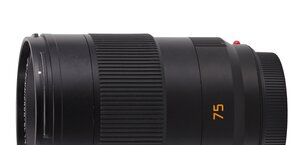Mitakon Speedmaster 50 mm f/0.95
5. Chromatic and spherical aberration
Chromatic aberration
At the minimum focusing distance the lens fares even worse than at medium distances and at infinity so, looking at photos below, it would be difficult to say where the focus plane is situated. As a result the assessment of longitudinal chromatic aberration remains a bit tricky. Still if you analyze out-of-focus areas positioned further (no matter what it means) there is no strong coloration visible. |

Please Support UsIf you enjoy our reviews and articles, and you want us to continue our work please, support our website by donating through PayPal. The funds are going to be used for paying our editorial team, renting servers, and equipping our testing studio; only that way we will be able to continue providing you interesting content for free. |
- - - - - - - - - - - - - - - - - - - - - - - - - - - - - - - - - - - - - - - - - - - - - - - -
That aberration is negligible even at the maximum relative aperture where it amounts to about 0.03%. On stopping down it drops to near 0.02%. In this category the performance of the Mitakon is sensational.
| A7R II, RAW, f/0.95 | A7R II, RAW, f/8.0 |

|

|
Spherical aberration
The performance of the Mitakon Speedmaster 50 mm f/0.95 features all symptoms of bad spherical aberration correction. In the first photo of this chapter it is difficult to notice the depth of field layout as the f/0.95 crop is a bit fuzzy – one of effects connected to high levels of spherical aberration. Additionally, when you take a closer look at the depth of field by f/1.4 and f/2.0, you see quite pronounced ‘focus shift’ effect – the change of aperture values causes a noticeable shift of focal plane toward greater distances.Circles of light we got in front of and behind the focus also prove spherical aberration is not corrected in a proper way. The circle before the focus features very soft edges and smooth light transition. The second circle comes with a very noticeable rim. Overall these are textbook examples how that aberration shouldn’t be corrected.
| A7R II, f/0.95, in front of | A7R II, f/0.95, behind |

|

|






